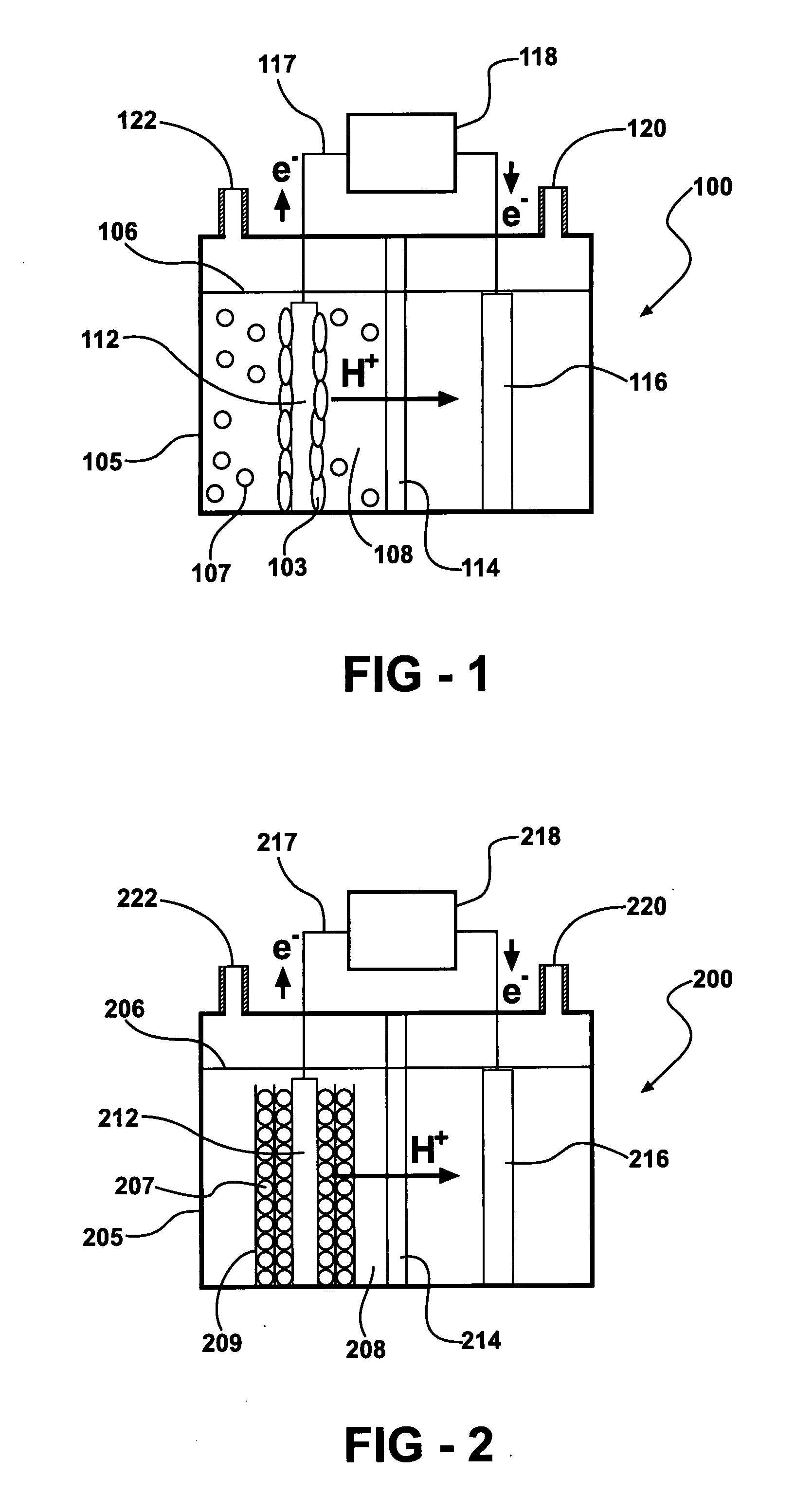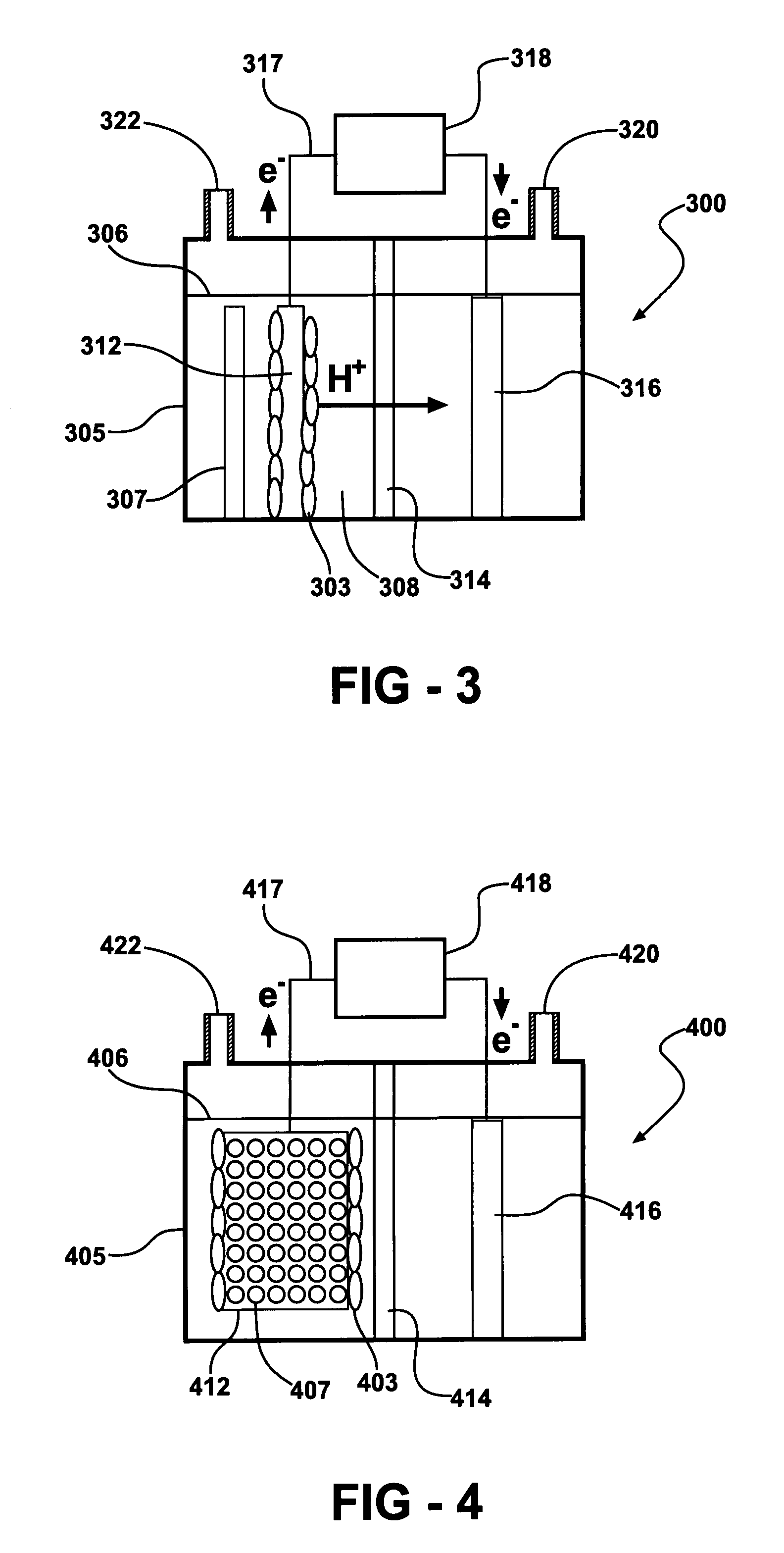Substrate-enhanced microbial fuel cells
a fuel cell and microorganism technology, applied in the field of microorganism fuel cells, can solve the problems of limited power output, hampered by relatively low power output, and generally poor organic matter content of sediments
- Summary
- Abstract
- Description
- Claims
- Application Information
AI Technical Summary
Benefits of technology
Problems solved by technology
Method used
Image
Examples
examples
[0130]Substrates. Chitin is a polysaccharide of N-acetyl-β-D-glucosamine (C8H13NO5), and it is the second most abundant material in the world after lignocellulose. It is widely available as a seafood industry byproduct in coastal areas and is readily degraded by marine bacteria. Depending on the particle size, pretreatment method, and exact chemical composition, i.e. the ratio of rapidly to slowly degradable fractions, different forms of chitin can be used. In this example ChitoRem™ SC-20 (Chitin 20) and ChitoRem™ SC-80 (Chitin 80) are used as received (JRW Bioremediation, LLC, from Lenexa, Kans., USA). The Chitin 20 preparation consisted of crushed crab shells containing approximately 20% chitin, 25% protein, 40% calcium carbonate, and 15% water. The Chitin 80 preparation was composed of deproteinized and demineralized crab shells containing approximately 95% chitin which were sieved to a particle size less than 20 mesh (<841 μm). Chitin 20 is more easily degraded than Chitin 80 du...
PUM
| Property | Measurement | Unit |
|---|---|---|
| electron conductive | aaaaa | aaaaa |
| conductive | aaaaa | aaaaa |
| electrically conductive | aaaaa | aaaaa |
Abstract
Description
Claims
Application Information
 Login to View More
Login to View More - R&D
- Intellectual Property
- Life Sciences
- Materials
- Tech Scout
- Unparalleled Data Quality
- Higher Quality Content
- 60% Fewer Hallucinations
Browse by: Latest US Patents, China's latest patents, Technical Efficacy Thesaurus, Application Domain, Technology Topic, Popular Technical Reports.
© 2025 PatSnap. All rights reserved.Legal|Privacy policy|Modern Slavery Act Transparency Statement|Sitemap|About US| Contact US: help@patsnap.com



